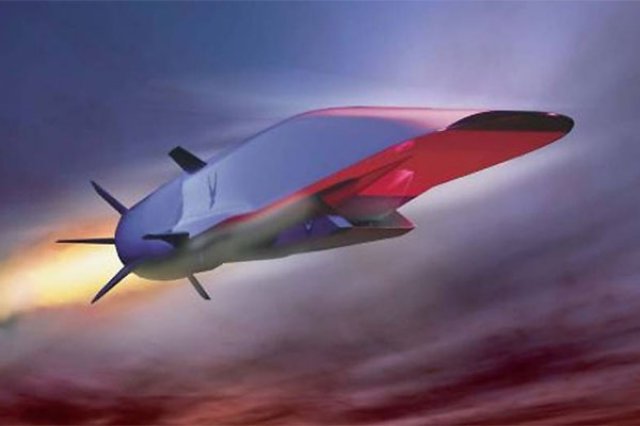Scientists with the US Air Force Research Laboratory and the Pentagon’s research arm are working to build a new hypersonic air vehicle that can travel at speeds up to Mach 5 while carrying guidance systems and other materials. Air Force Chief Scientist Mica Endsley said the service wants to build upon the successful hypersonic test flight of the X-51 Waverider 60,000 feet above the Pacific Ocean in May of 2013.
Endsley said the Air Force and DARPA, the Pentagon’s research entity, plan to have a new and improved hypersonic air vehicle by 2023.
“X-51 was really a proof of concept test. It showed that you could get a scram jet engine, launch it off an aircraft and it could go hypersonic. It was able to go more than Mach 5 until it ran out of fuel. It was a very successful test of an airborne hypersonic weapons system,” Endsley said.
The 2013 test flight, which wound up being the longest air-breathing hypersonic flight ever, wrapped up a $300 million technology demonstration program beginning in 2004, Air Force officials said.
A B-52H Stratofortress carried the X-51A on its wing before it was released at 50,000 feet and accelerated up to Mach 4.8 in 26 seconds. As the scramjet climbed to 60,000 feet it accelerated to Mach 5.1.
The X-51 was also able to send back data before crashing into the ocean — the kind of information now being used by scientists to engineer a more complete hypersonic vehicle.
“After exhausting its 240-second fuel supply, the vehicle continued to send back telemetry data until it splashed down into the ocean and was destroyed as designed,” according to an Air Force statement. “At impact, 370 seconds of data were collected from the experiment.”
Endsley added that the next-generation effort is not merely aimed at creating another scramjet but rather engineering a much more comprehensive hypersonic air vehicle.
“What they are trying to do now is build the whole system so that it is not just about the engine. You have to have materials that can operate at the kind of temperatures you have when you are going at hypersonic speeds. You have to have guidance systems that will function when you are going at those types of speeds. There are a bunch of technological challenges that have to be addressed to make a functioning system that will work,” she said.
The new air vehicle effort will progress alongside an Air Force hypersonic weapons program. While today’s cruise missiles travel at speeds up to 600 miles per hour, hypersonic weapons will be able to reach speeds of Mach 5 to Mach 10, Air Force officials said.
The new air vehicle could be used to transport sensors, equipment or weaponry in the future, depending upon how the technology develops.
Also, Pentagon officials have said that hypersonic aircraft are expected to be much less expensive than traditional turbine engines because they require fewer parts.
Recognizing the countries like China have been testing and developing hypersonic missiles, Pentagon and Air Force officials see hypersonic flight as integral to the future.
“Certainly, the U.S. is not the only country involved in developing hypersonic weapons. They are showing a lot of capability in this area. The advantage of hypersonics is not just that something goes very fast — but that it can go great distances at those speeds,” Endsley added.
She explained that hypersonic flight could speed up a five hour flight from New York to Los Angeles to about 30 minutes. That being said, the speed of acceleration required for hypersonic flight precludes the scientific possibility of humans being able to travel at that speed.
Drawing by Kris Osborn
Source: Military.com

